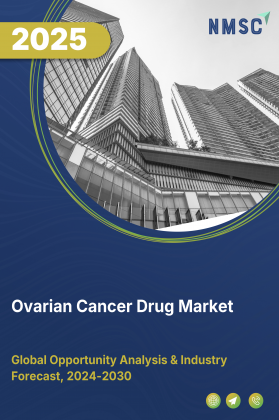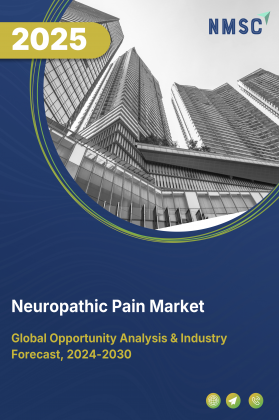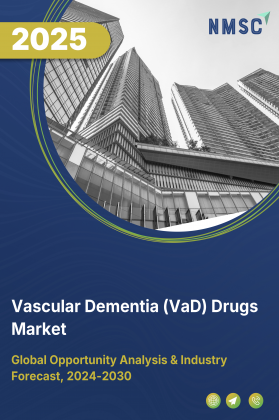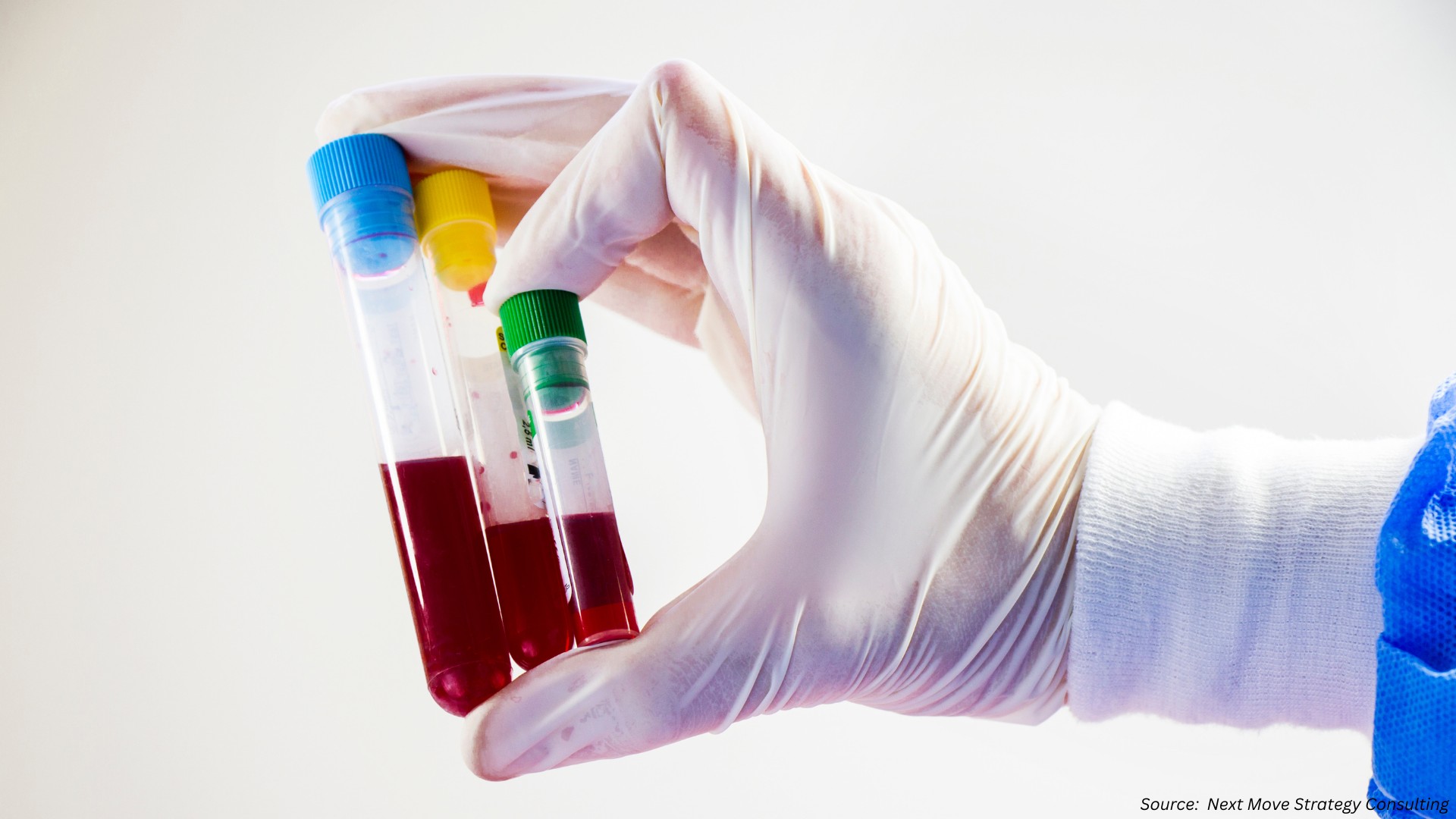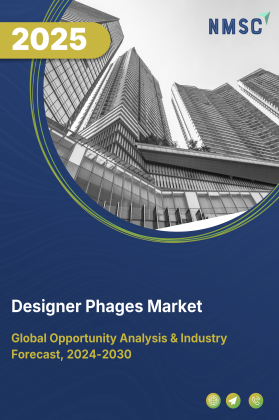
Designer Phages Market by Technology (Phage Therapy, Endolysin Technology, Bacteriophage Engineering and Others), by Formulation Type (Liquid Phage Preparations, Freeze-Dried Phages and Others), by Application (Therapeutics, Diagnostics, Agriculture & Crop Protection, Aquaculture and Others), and by End User (Healthcare Institutions, Research & Academic Institutes, Biopharma & Biotechnology Companies and Others) – Global Opportunity Analysis and Industry Forecast, 2025–2030
Designer Phages Industry Outlook
The global Designer Phages Market size was valued at USD 1.57 billion in 2024, with an estimation of USD 1.70 billion in 2025 and is predicted to reach USD 2.49 billion by 2030 with a CAGR of 8.0% from 2025-2030.
The market is witnessing strong growth driven by rising investment in healthcare and increasing focus on advanced therapeutic solutions. The growing prevalence of infectious diseases and the challenge of antimicrobial resistance are creating demand for precise and adaptive treatments that can target resistant pathogens.
In agriculture, designer phages are being adopted to combat plant diseases and pest infestations, offering a sustainable alternative to conventional chemical solutions. With their ability to address both medical and agricultural challenges, designer phages are emerging as a versatile and innovative solution that is shaping the future of therapeutics and crop protection.
Increase in Healthcare Spending Fuels the Growth of the Market
The increase in healthcare spending is a key driver for the designer phages market growth, as it channels greater investment toward advanced therapeutic solutions and research. Expanding healthcare budgets create a favorable environment for innovative treatments, including designer phages, by increasing funding for development, clinical adoption, and commercialization.
According to the latest projections from the U.S. Centers for Medicare & Medicaid Services, national health expenditure is expected to grow at an average of 5.8% between 2024 and 2033, outpacing average GDP growth of 4.3%. This will push healthcare’s share of GDP from 17.6% in 2023 to 20.3% in 2033.
Such sustained financial commitment not only strengthens the pipeline for next-generation biologics but also accelerates the integration of targeted therapies like designer phages, thereby fuelling the designer phages market expansion.
The Rising Incidence of Infectious Diseases Further Propels the Market Growth
The growing prevalence of infectious diseases such as tuberculosis, HIV/AIDS, hepatitis, and drug-resistant bacterial infections is significantly driving the demand for advanced therapeutic solutions, thereby supporting the growth of the designer phages market. With antimicrobial resistance on the rise, conventional treatments are becoming less effective, creating an urgent need for therapies that precisely target and eliminate pathogens.
For instance, global HIV/AIDS-related deaths, which were 2.8 million in 2002, are projected to increase to 6.5 million by 2030 under a baseline scenario, despite expanded antiretroviral coverage. Even under an optimistic scenario with enhanced prevention measures, deaths could still reach 3.7 million by 2030.
This escalating disease burden and resistance to existing drugs underscore the necessity for innovative solutions such as designer phages, which offer highly specific and adaptive treatment options. By addressing both existing and emerging infectious threats, designer phages are positioned as a crucial element in the future of infectious disease management.
Growing Emphasis on Combating Plant Diseases and Pest Infestations is Driving the Growth of the Market
The designer phages market demand is witnessing strong growth driven by rising investment in healthcare and increasing focus on advanced therapeutic solutions. The growing prevalence of infectious diseases and the challenge of antimicrobial resistance are creating demand for precise and adaptive treatments that target resistant pathogens.
In agriculture, designer phages are being adopted to combat plant diseases and pest infestations, offering a sustainable alternative to conventional chemical solutions. With their ability to address both medical and agricultural challenges, designer phages are emerging as a versatile and innovative solution that is shaping the future of therapeutics and crop protection.
Stringent Regulatory Requirements are Hindering the Growth of the Market
The designer phages market faces growth challenges due to stringent regulatory requirements that delay product approvals and increase development costs. The absence of standardized global regulatory frameworks further complicates the approval process, discouraging investments and slowing commercialization. These hurdles restrict the pace at which innovative phage-based therapies and solutions enter the market.
Integration of Phage Display Technology Creates Future Growth Opportunities in The Market
The integration of phage display technology creates future growth opportunities in the market due to its ability to engineer highly specific and targeted bacteriophages. The technology enables the selection of phages with customized binding properties, allowing for the development of novel therapeutic agents, diagnostics, and biocontrol solutions.
For example, in 2024, University Medical Center Utrecht collaborated with Delft University of Technology launched an initiative to develop more broadly acting bacteriophages that are viruses specifically target and kill bacteria. The advancements in this area are expected to revolutionize treatments for antibiotic-resistant infections and expand the use of designer phages in agriculture, biotechnology, and pharmaceuticals, thereby driving future industry growth.
Market Segmentation and Scope of the Study
The designer phages market report is divided on the basis of technology, formulation type, application, end user, and region. On the basis of technology, the market is grouped into phage therapy endolysin technology, bacteriophage engineering; and adjunct technologies. On the basis of formulation type, the market is categorized into liquid phage preparations, freeze-dried phages, encapsulated or controlled release phages, phage-based kits, immobilized phages, hybrid formulations, and others. On the basis of application, the market is divided into therapeutics, diagnostics, agriculture and crop protection, aquaculture, food safety and preservation, and others. On the basis of end user, the market is grouped into healthcare institutions, research and academic institutes, biopharma and biotechnology companies, agricultural and aquaculture enterprises, food processing and beverage companies, veterinary clinics and animal health providers, and others. Regional breakdown and analysis of each of the aforesaid segments includes regions comprising of Asia-Pacific, North America, Europe, and RoW.
Geographical Analysis
North America dominates the designer phages market share at present and is projected to continue its dominance throughout the forecast period. This is owing to the significant expenditure towards the healthcare sector that supports extensive research and development activities in novel therapeutic solutions.
As per the latest report published by the American Cancer Society, the National Institutes of Health received USD 300 million to conduct and support medical research. Also, National Cancer Institute a part of NIH received USD 120 million to focus especially on cancer research and training in 2024. The robust financial support is accelerating development of designer phages for therapeutic applications particularly in oncology that contributes to the growth of the market.
Moreover, the increasing prevalence of diseases further fuels the growth of the market in the region due to the rising demand for specialized treatment methods. The surge in conditions such as cancer, antibiotic-resistant infections and neurodegenerative disorders intensified the need for innovative treatment approaches.
In Europe, the market for designer phages is being driven by a combination of demographic and healthcare challenges. The region faces a high burden of antimicrobial resistance, with the European Centre for Disease Prevention and Control estimating that more than 35,000 people die annually in the EU/EEA due to antibiotic-resistant infections. This escalating resistance has created an urgent need for innovative anti-infective solutions.
At the same time, Europe’s rapidly ageing population adds further pressure, as the United Nations projects that by 2050 nearly 30% of Europeans will be aged 65 or older, significantly increasing vulnerability to infections. Moreover, the presence of a strong R&D ecosystem and supportive EU initiatives such as Horizon Europe are accelerating advancements in microbiome and phage-related research, fostering growth opportunities for designer phages across the region.
Asia-Pacific is projected to be the fastest-growing region in the designer phages market share, supported by demographic shifts and rising healthcare needs. The region’s rapidly aging population is a key driver, as older individuals are more susceptible to age-related diseases and infections due to weakened immune systems, thereby increasing the demand for effective treatment options.
In India, for example, the decadal growth rate of the elderly population is currently estimated at 41%, and according to the United Nations Population Fund 2023 India Ageing Report, the elderly population is expected to double to over 20% of the total population by 2050. By 2046, India’s elderly population is also projected to surpass its child population. These shifts highlight an urgent need for innovative therapies, positioning designer phages as a promising solution to address infectious diseases in aging societies across Asia-Pacific, and fueling strong regional designer phages market growth.
In the Rest of the World (RoW), which includes Latin America, the Middle East, and Africa, the designer phages sector is gaining traction due to diverse regional needs and healthcare priorities. In Latin America, high rates of infectious diseases and agricultural challenges are pushing the demand for sustainable and effective biological solutions, where phage therapy offers a viable alternative to antibiotics and chemical treatments.
The Middle East, with its rapidly advancing healthcare infrastructure, is increasingly adopting innovative therapies to address rising antimicrobial resistance and strengthen public health systems. Meanwhile, in Africa, the combination of widespread bacterial infections, limited access to advanced antibiotics, and the need for cost-effective healthcare solutions is driving interest in phage-based treatments.
Strategic Innovations Adopted by Key Players
The global designer phages industry is witnessing strong growth as leading companies advance innovative therapies and expand their market presence. Players such as BiomX, Locus Biosciences, and Armata Pharmaceuticals are strengthening their clinical pipelines through novel phage-based therapeutics targeting resistant bacterial infections, while Micreos and Intralytix are diversifying into food safety and consumer health applications.
Companies like Proteon Pharmaceuticals and Cytophage Technologies are focusing on agriculture, aquaculture, and veterinary health to broaden adoption. At the same time, firms including SNIPR Biome, Eligo Bioscience, and Phaxiam are investing heavily in genetic engineering, synthetic biology, and CRISPR-driven phage platforms.
Collectively, these strategies highlight a competitive landscape in the designer phages market where innovation, partnerships, and cross-sector expansion are driving long-term growth, improved brand visibility, and greater global acceptance of phage-based solutions.
Key Benefits
-
The report provides quantitative analysis and estimations of the sector from 2025 to 2030, that assists in identifying the prevailing designer phages market opportunities.
-
The study comprises a deep-dive analysis of the current and future designer phages market trends to depict prevalent investment pockets in the sector.
-
Information related to key drivers, restraints, and opportunities and their impact on the market is provided in the report.
-
Competitive analysis of the key players, along with their market share is provided in the report.
-
SWOT analysis and Porters Five Forces model is elaborated in the study.
-
Value chain analysis in the market study provides a clear picture of roles of stakeholders
Designer Phages Market Key Segments
By Technology
-
Phage Therapy
-
Lytic Phages
-
Lysogenic Phages
-
Phage Cocktails
-
-
Endolysin Technology
-
Recombinant Endolysins
-
Engineered
-
-
Bacteriophage Engineering
-
Genetically Modified Phages
-
Synthetic Phages
-
CRISPR-Cas Phages
-
-
Adjunct Technologies
-
Nanoparticle-Conjugated Phages
-
Phage-Derived Peptides
-
By Formulation Type
-
Liquid Phage Preparations
-
Freeze-Dried Phages
-
Encapsulated/Controlled Release Phages
-
Phage-Based Kits
-
Immobilized Phages
-
Hybrid Formulations
-
Others
By Application
-
Therapeutics
-
Diagnostics
-
Agriculture & Crop Protection
-
Aquaculture
-
Food Safety & Preservation
-
Others
By End User
-
Healthcare Institutions
-
Research & Academic Institutes
-
Biopharma & Biotechnology Companies
-
Agricultural & Aquaculture Enterprises
-
Food Processing & Beverage Companies
-
Veterinary Clinics & Animal Health Providers
-
Others
By Region
-
North America
-
The U.S
-
Canada
-
Mexico
-
-
Europe
-
The UK
-
Germany
-
France
-
Italy
-
Spain
-
Denmark
-
Netherlands
-
Finland
-
Sweden
-
Norway
-
Russia
-
Rest of Europe
-
-
Asia-Pacific
-
China
-
Japan
-
India
-
South Korea
-
Australia
-
Indonesia
-
Singapore
-
Taiwan
-
Thailand
-
Rest of Asia-Pacific
-
-
Rest of the World
-
Latin America
-
Middle East
-
Africa
-
Key Players
-
BiomX Ltd.
-
Micreos
-
Phaxiam
-
Locus Biosciences, Inc.
-
Proteon Pharmaceuticals
-
Cytophage Technologies Ltd
-
Armata Pharmaceuticals, Inc.
-
SNIPR Biome ApS
-
PrecisionPhage
-
MEDEA Biopharma
-
Eligo Bioscience
-
Intralytix, Inc
-
PhagePro, PBC
-
Eliava BioPreparations Ltd.
Report Scope and Segmentation
|
Parameters |
Details |
|
Market Size in 2025 |
USD 1.70 Billion |
|
Revenue Forecast in 2030 |
USD 2.49 Billion |
|
Growth Rate |
CAGR of 8.0% from 2025 to 2030 |
|
Analysis Period |
2024–2030 |
|
Base Year Considered |
2024 |
|
Forecast Period |
2025–2030 |
|
Market Size Estimation |
Billion (USD) |
|
Growth Factors |
|
|
Countries Covered |
28 |
|
Companies Profiled |
15 |
|
Market Share |
Available for 10 companies |
|
Customization Scope |
Free customization (equivalent to up to 80 working hours of analysts) after purchase. Addition or alteration to country, regional, and segment scope. |
|
Pricing and Purchase Options |
Avail customized purchase options to meet your exact research needs. |

















 Speak to Our Analyst
Speak to Our Analyst



